The Best Painting Tools (bits of advice from 30 Years of Painting)
The key to doing quality work quickly is good painting tools. We will start with a few time-saving painting tools, followed by my list of the best painting tools that you really do need, and then a few extras paint tools that will make the paint job easier.
Big Timesaving Painting Tools:
Wide rollers: Pros use these for big long walls. They require a special bucket and 18-inch roller sleeve—a medium nap is a good length— but they are worth the investment if you do a lot of painting: you will literally go twice as fast. Clean by soaking in water in the bucket (we have a post just on cleaning rollers): it’s not hard. As you paint, keep the bucket clean: as with all pans/buckets, don’t let paint chips fall into the paint. (If they do, use an old nylon sock to strain paint!).
Extension Poles: we use two poles mostly (2-4 ft., and 4-8 feet) and then we have a shortie for tight spots and a big boy for tall ceilings. Consider the quick-lock type, which cannot come loose while you work. The screw-threads tend to loosen as you move it. Our recommendation comes with a converter tip for both types: it’s a tool your kids will pass down. The telescoping: you don’t have to change poles much. The very big 16 footer bends too much at full extension: we use a ladder for that.
Sprayers—our recommendations for different budgets:
- We have an entire post on airless paint sprayer reviews, featuring 3 sprayers for 3 budgets.
- The best commercial (and pricey) paint sprayer today is hands down the Graco Pro 210 ES. Expensive, but it will last a lifetime with proper care. See the Graco Pro 210 ES
- The Graco Magnum is a workhorse—costs less and is preferred by homeowners who do a fair bit of painting. Available online
- The budget sprayer is the Wagner Flexio 590, you can see it here. It has a very reasonable price for what you get.
If you spray: pick up a hand-masker —it’s a tape/paper dispenser. This 4-minute video shows how to use it. You need: a roll of paper and painters masking tape. You can also use masking film instead of paper (it’s wider). Remember that tan masking tape leaves a mark after a few hours (cheap glues). We use Blue Painters Tape, the blue stuff for more delicate surfaces. (We use it all over the house too.) The ‘hand masker’ method is also good for protecting window sills, doors, etc., that get splatter under a roller. It comes as a kit seen below (just above “Rags”).
Ladders are fine but the hassle of moving them a lot vanishes with a platform. Ah, a platform. Better yet, try this rolling scaffold which I first bought many years ago and use daily. We have a more detailed article on the best ladder for every situation.
Best Painting Tools: All Jobs
We have compared the paint tools below—you’ll find each pick to be the very best painting tools deal around.
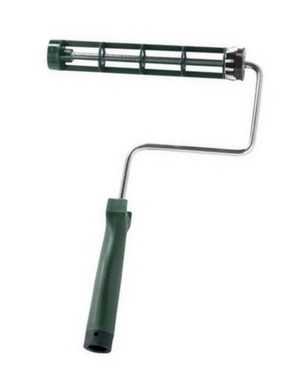
Roller Cage, aka Roller Frame or Roller
Wooster is my top choice (Purdy is great too), and it is really the best paint roller frame (cage). The ones in those budget kits
break easily. This is the Quick-Lock type: SUE this pole that we use. So much better than the broomstick screw type. It is a snap system, (that also accepts a screw-in pole). It is so worth it. We use them because we can remove poles and re-attach a different length pole quickly, (plus the screw type comes loose—bummer).
See the Sherlock system 1-minute video.
Roller Cover
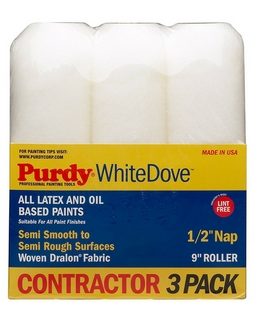
We use wool or a wool/poly blend. The Purdy is my choice—it’s the best paint roller cover, and online a very good deal. A half inch nap is good for most interior work: but go up to 1-inch for stucco or popcorn ceilings. These don’t shed and leave ticks on your wall like the low-cost ones and they hold a lot of paint so you can go farther with each dip. No brainer.
TIP: Don’t buy these roller storage thingys. The way to store this essential wall painting tool: put your wet paint roller overnight in an air-tight plastic bag and put several drops of water inside! Store rollers and brushes for some days—if you don’t want to clean, don’t!
A Quality Brush
We do not use brushes for ‘all paints’: the bristles don’t behave well. We only use Purdy Nylox bristles for latex paints. Actually we sometimes do buy a dollar store paint brush to leave in a small can of primer or to use with some oil paint. We don’t clean brushes for icky paints.
 A Purdy is a lifetime painting tool: well, for us it’s about 6 months of DAILY use…and it’s easier to clean than you’d think. Usually, a good Purdy is only 20 bucks for one, but if you pay less (let’s say about 8 bucks) you go slower, the bristles friz up and don’t last. Plus the Purdy cuts a line so easily you don’t need tape: we don’t anyway. In general, we use an angle cut brush for everything as a flat cut brush does not work as well in corners. (We pros go for the 3 or 3.5-inch brush as it holds more paint: save time with less dipping).
A Purdy is a lifetime painting tool: well, for us it’s about 6 months of DAILY use…and it’s easier to clean than you’d think. Usually, a good Purdy is only 20 bucks for one, but if you pay less (let’s say about 8 bucks) you go slower, the bristles friz up and don’t last. Plus the Purdy cuts a line so easily you don’t need tape: we don’t anyway. In general, we use an angle cut brush for everything as a flat cut brush does not work as well in corners. (We pros go for the 3 or 3.5-inch brush as it holds more paint: save time with less dipping).
Read more about the best painting brushes that I recommend.
My Main Professional Painting Hand Tool: 5-in-1
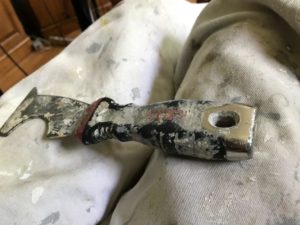
This is my personal assistant: a 6-in-1 “putty knife-can opener-nail puller-hammer-roller squeegee-scraper(s)”. You need the metal hammer end: important to have. It’s like having a 3rd hand. Keep in the sexy side pocket of your…painter’s pants. Our painter’s pants have a nice side pocket just for a putty knife (read more about painters pants). Be careful with the sharp point on this knife when in the side pocket: I put a hole in my car upholstery once. Once I knew a librarian who could not think without a pencil in her hand. I cannot work without my 5 in 1 tool in my side pocket. I also need coffee. Essential.
Update: a new multi-tool with a razor knife option: nice, but twice the price. I’m a poet.
Roller Bucket or Tray/Pan
I prefer this roller bucket and screen set-up over a tray. If you still want a tray after this paragraph, use this one because the roller will not shed lint and the brush is excellent (very clean lines). But we use 5-gallon buckets with this screen inside. Push the whole thing with your foot with this caddy on wheels. Nice. This system is so much better than a tray/pan. Trays spill easily. To store set-up, we use a plastic bag for an overnight lid (and a wet rag will do too). It is made out of durable plastic and balances a lot better than a paint tray and washes out easy. It’s a must-have wall painting tool. PS: Canadians—your rollers are a bit too wide for the bucket: read about it here.
Small Paint Roller: Min-rollers
We use these mini-rollers to paint behind toilets and radiators etc.—in any kind of tight spot. Read more about how to paint behind a toilet here.
Extension Ladder
If you cannot borrow your neighbor’s ladder, get a quality 12-foot extension for around the house or 24-footer if you are brave. I personally would not go up a ladder bigger than 24 feet (not counting my reckless youth). You will use it outside and inside for painting stairwells. Don’t store outside as the rope will degrade quickly. I have the one linked here, as well as a 24-footer and others. More about ladders for every budget here.
Step Ladder
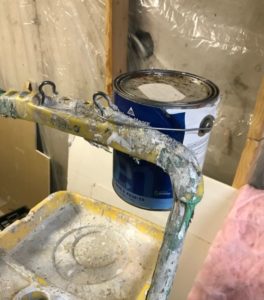
Oh, baby how I love this ladder. It has a shelf for tools and the ‘cut’ bucket, and I customized it by adding a thick screw to the top handle for hanging the cut bucket as it is up higher. We move fast and this was a big help for us. I did not invent it, but I perfected it! See photo. That hook should be patented!
Drop Cloths
Good to have around while painting. We use canvas tarps for floors, plastic for furniture. Not expensive and it has many uses. Tip: wipe up drips that go on the plastic and cloth so you do not step in one and track paint when you step off onto the floor! Long-skinny canvas ones (“runners”) are best for walls: only 4′ wide. We also use heavy duty stuff: it is very thick plastic. Nice.
HANDY: Drop cloths with grip. Once pressure is applied, the rubber dots grab and hold firm. You can see the different sizes here.
Painting’s Tape and Hand masker
The green painter’s tape we use has glue that does not leave a residue like tan masking tape. Tape is not used as much as you think, (see our post on painting the walls or trim first), but essential to mask off the trim in tight corners. (A good paint brush (above) eliminates the need for most taping.)
This hand masker kit is what we use to prevent splatter on floors, sills, etc: please watch the video to understand how to use it. It’s a big time saver. But you should have more tape and this paper on hand: we keep wide paper and narrow paper in the shop.
Work Light
Good lighting like this LED work light will help you catch the ‘skips’ in the paint. I consider this one of my main painting tools. Anything you miss with good lighting will never be visible in normal light later. We used to use halogen which is very hot and the bulbs that wear out or break. LED’s go forever.
Fill holes that dry fast
Quick Dry Spackle is a somewhat new invention. Keep the lid tight! The old trusty putty knife is better than a 5-in-1 for getting a nice patch.
For larger repairs, have some pre-mixed drywall compound handy: it dries slowly, but is easy to sand unlike the quick dry! You’ll need wide taping knives to apply.
Sandpaper
Keep some various kinds around: medium to fine (100-150-220). Buy the good stuff and don’t let it get wet! For rough sanding, I keep 80 grit sandpaper in my back pocket: always. From another planet, comes a sanding sponge, the kind you can wet to cut through plaster faster: but we just use for a quick blast before adding another coat of mud, never for the final touch.
Block Sander
Just a block of wood that you can wrap sandpaper around will save your hands some stress. You can buy the kind that has a clip so the sandpaper does not move around. Tip: Between coats of paint/primer, remember to give walls a quick blast with about 120-150 grit sandpaper to remove ticks and lint trapped there from the last painter who used a brush-roller kit that shed lint~!
Caulk Gun
I am using this one—my secret love. We have 3 posts on caulking, but this post is just on the guns. Guns made in ‘low-cost’ countries (you know what I mean) frustrate you by pushing out caulk even after you click the tension rod off. What you need is moderate quality and it needs to have a cutting tool to cut the tip off the new tube, and a poker to break the seal inside the spout of the tube. You can carry around a knife and a nail like we had to do before they got smart and built them into the gun—what a drag man.
Rags
We like non-white rags as drop cloths are generally white and white rags disappear when dropped. Caution with colored rags: the pigment may come out when you wipe. An old flannel shirt is best. Keep a damp rag in your side rag-loop (the loop on the side of painter’s pants are not for hammers!) Yes, you can buy rags online: we do buy rags!
Clean Up Tools: Wire brush
I love my Purdy wire brush. For prep of iron rails? Yes, but to remove dried paint from the outside of your paintbrush is the main use of a wire brush. Cleaning a brush is actually easy. We use this comb but it is not to take dry paint off the brush! Please. This paint brush comb is for straightening the bristles to let the brush dry: then the bristles are like new. You can use a hair comb too. Martha Stewart is wrong about this. Her website shows, to clean under water! Funny self-taught painters!
Brush/Roller Spinner. Finally, to spin a roller cover dry (a few dunks and a few spins and presto), use this brush/roller spinner (also on the ‘comb page’ above as an option) You can spin brushes too but we just use it for rollers. See my post on cleaning roller covers and our post all about why you should only buy the best roller covers.
You can see the complete visual list of clean up tools and supplies here.
Screwgun—Drill—Screwdriver
Get yourself a good screwgun—really an electric screwdriver—and this is a great drill. What is a screwdriver? It’s a hand tool we used to use before fire was discovered. I might still have some. But seriously, read our full post on screw guns for every budget and all the accessories you can wish for.
Pencil
• Never use ink on surfaces before painting. Don’t believe me? Ink requires a nasty primer (see just below)
We buy Neon carpenter’s pencils: the lead never breaks!
Stain Blocking Primer
We have a post all about primers but the bottom line, for ink, water stains etc, is to use the one sure thing: Kilz Premium. IF you are not sure if you will have enough stain blocking power…BIN has a powerful shellac stain blocker spray can (comes as liquid also), but please wear a respirator for BIN. Also, 1-2-3 is awesome for tough stains.
Tip: Cut down the handle on an old brush and keep it inside the primer can with the lid tight: always have it ready for stains. Be sure to wear gloves! Use Zinsser Mold Primer if you have a mold problem. We have a whole new post on how to paint over a mold problem.
Some Non-Essentials Painting Tools
Not just painting tools, I use some of these every day. You can do without them for occasional house painting, but they are good professional painters tools and can make your life much easier.
- Cut Bucket (for brushing) – We just use the single gallon cans and here is a good tip: use a regular can opener to remove the lip that holds the lid. We
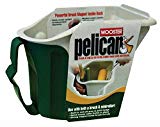 usually buyseveral gallons of the same color, and keep one can nice for storage (that means we don’t gunk up the seal with paint: we wipe it clean with brush). You can buy 2-quart or 1-gallon buckets that come with lids: great for storage too.
usually buyseveral gallons of the same color, and keep one can nice for storage (that means we don’t gunk up the seal with paint: we wipe it clean with brush). You can buy 2-quart or 1-gallon buckets that come with lids: great for storage too. - Ceiling Scraper (popcorn remover): Hate that popcorn ceiling? Knock it off with this.
- Painter’s Pants – they have great pockets, you can find them here at a good price. I like the kind with a cell phone pocket and for pants that don’t have that, I sew a pocket onto the front of the thigh. We have a post all about these.
- Tool Bucket –
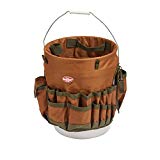 A bucket organizer: a good place to keep things together. You also need the actual bucket! This bucket holster is what we use to gather all painting tools every so often and you won’t have to hunt them down when you need them. That is a momentum killer.
A bucket organizer: a good place to keep things together. You also need the actual bucket! This bucket holster is what we use to gather all painting tools every so often and you won’t have to hunt them down when you need them. That is a momentum killer. - Work gloves – Not for heavy duty work, but for painting: I cut off the fingertips. Keeps hands clean and protected from cuts etc. Latex gloves are here.
- Shop Vac– I keep a wet-dry vac around all the time. Once I dropped a quart of paint on a lady’s carpet….yes at quitting time! Rushed out to get the vac. With adding warm water to the mess and going over and over, I left a bit spot much cleaner than the rest of the carpet!
- Respirator. This is the link for the mask only then, add these filters: a chemical cartridge, or do what I do and buy the kit.The kit has 3 things: the main filter (linked seperately above as well), the outer paper filter (makes the inner filter last a very long time) and it comes with the retaining clip to join them. It’s necessary for spraying or using oil/toxic paints and many other toxins. You have to read what each filter does if you are around deadly gasses. It is not really expensive, and to us, health and safety really must be first. Learn more about the type of filters and how to use them in our post about respirator masks.
- Tack cloth – For when you need to really remove all dust/lint. This is more for furniture painting, but good for eye-level and hand-level door frames, especially around the door knobs.
- Sponge – for cleaning walls before painting (after sanding especially). I keep one semi-damp on hand.
- Powerful Fan– Keeps you cool as well as helps dry the paint faster. We have several.
- A cell phone pouch to protect phone’s openings from dust and paint. I was given the cover in the photo which goes in a pouch. Love it.
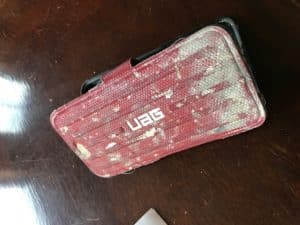
iPhone 6plus case after 1 year: still clean as new! - Tool Pouch– I have lots of pouches on my belt for all kinds of painters tools: I hate to go hunting for a tool. Love my tool bag.
So there you have it.
Any questions? Write in a comment below (of course no login!)
Don’t miss our other tool posts:
- 21 Tool Gifts That Are Totally Cool
- The Best Screw Gun for 3 Budgets (and Cool Accessories)
- New Tools for the Handy-Person Who Has Everything, or Not Enough
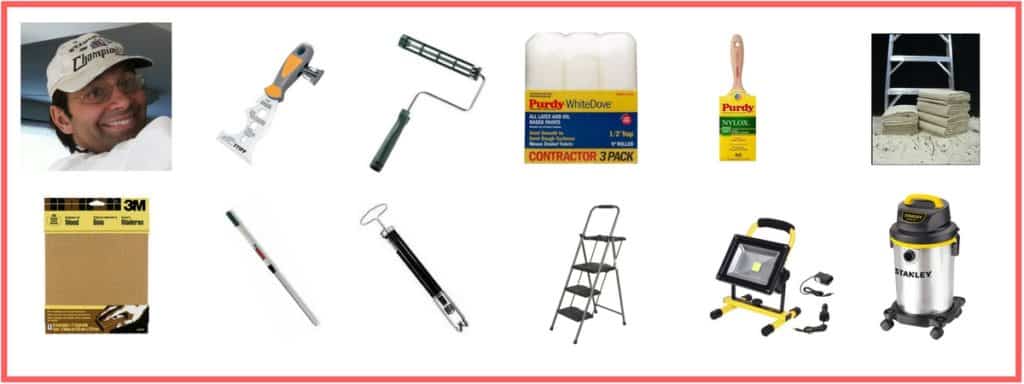

Let me know what are your favorite painting tools.

I am a semi-retired painter, sure, but I still love and care for my house painting tools. Any home maintenance task that needs to be done, I hook up my tool belt and I have everything that I need right on my person. After I paint a room or a wall, I always make sure to clean my tools. Painting tools are not just good for painting! I use my 5-in-1 knife all over; it’s a screwdriver, it cleans goo of the kitchen floor, on and on.
We all know the necessity for the right paint tool for the job (read on Architecture.com ).
Write us and let us know what you think. Are you convinced to buy the best painting tools for your home, or will you go with cheap working tools and throw them away?
Thanks
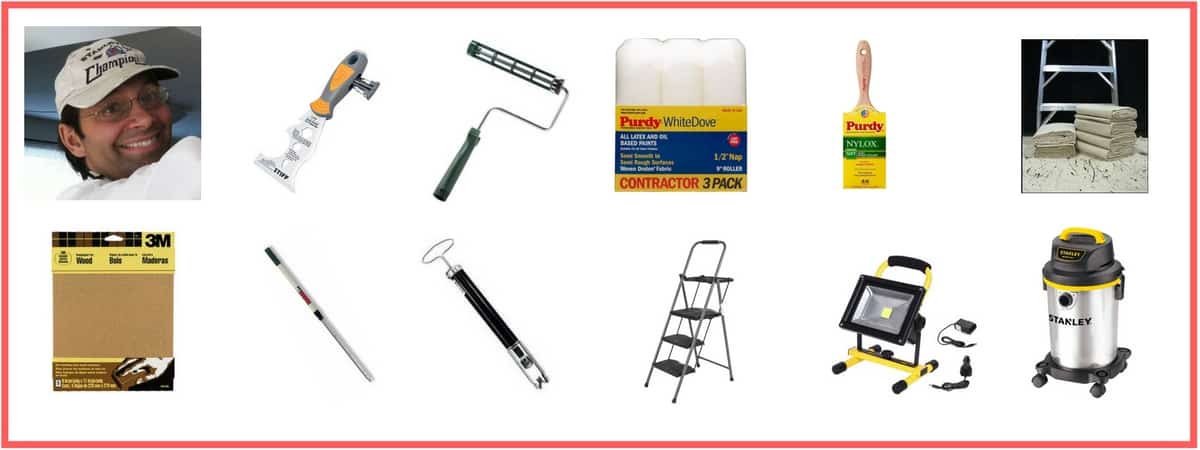
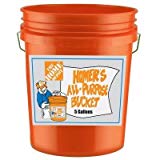
Thanks
Thanks
Are the painting tools supplied, both for art as well as house painting?
Just read the article.
Very nice and priceless information shared about painting tools.